Outreach Marketing: Types, Benefits & Key Metrics to Monitor
Whether you are new to digital marketing or have years of experience, you have definitely done outreach marketing in one form or another.
You may, however, not be sure you did outreach marketing correctly.
Well, not to worry, here is a complete guide to refresh your knowledge and improve the way you create and manage your outreach marketing campaigns.
What Is Outreach Marketing?
Outreach marketing is the strategy of promoting your brand and products or seeking partnerships by proactively contacting your target audience with a marketing or collaboration offering.
With so-called “passive” channels of marketing (like SEO), you have to wait for your target audience to visit your website and convert into a paid customer. However, outreach marketing is “active” in its nature, as you directly message your audience to promote your product.
The eventual goal of outreach marketing is to create and nurture strong relationships with your users and partners to improve customer loyalty and retention.
To have a better understanding of what this discipline is about, let me show you the most common forms it takes.
3 Outreach Marketing Types to Invest in
Outreach marketing is an umbrella term for a number of marketing tactics you use to reach out to your customers and collaborate with them. Although there are many types of outreach marketing, these three are the most popular.
Type #1: Email outreach
Let us begin with one of the classic channels for communicating with your prospects—email.
Some people might consider email marketing an outdated channel for running any kind of marketing campaign. At least, that’s what I thought when I was a digital marketing junior. But I couldn’t be more wrong about it.
Email remains one of the most effective channels (with an average ROI of 3,600% as of 2022) for engaging with your audience and partners. It is also an excellent choice as an outreach marketing tactic.
Some of the common use cases for email outreach include:
- Link building – asking the editor of the website where you want to place your backlink to write an article as a guest author. Another option is asking a digital marketer to exchange backlinks between the websites you both manage.
- Talent acquisition – reaching out to potential candidates you think would be a great fit for the open position you have, promoting your company as a great employer, and asking them to join you.
- Sales – doing lead generation by sending leads a product or service offering along with pricing and explaining the benefits they will get by becoming your customer.
- Influencer marketing – asking the right influencers to partner with you to promote your brand and products.
Note, however, that to run a successful outreach campaign over email, we need to take into consideration some of the specificities of this communication medium, especially regarding its format limitations.
Email outreach limitations
In the past, emails have consisted of text and attachments only. Now, modern email clients allow you to use images, gifs, and even a limited amount of JavaScript (for the interactivity of your messages).
However, simple text-only emails remain quite popular, especially when you are doing outreach.
Personally, I prefer to keep the outreach emails in a text-only format. My argument is that you want your recipients to feel a human has crafted this message personally for them. They won’t appreciate a bulk corporate email made from a template that you have sent to thousands of others.
From a recipient’s standpoint, ifI an email came from a company, your natural response is to not reply, as most corporate emails do not require a response. On the other hand, if you believe you have received a personalized email, you are more likely to answer it, as you know the sender is waiting for your reply.
People will almost never create a rich HTML email to send a personal message to somebody. They will simply open their email client and start typing a message. Thus, ordinary text emails are better.
Here’s what a good text-only message would look like in an email outreach campaign:

Reading this email, you get the impression that the account executive took the time to draft a message offering their services to you personally. This approach encourages you to share your thoughts about the offer which is directed specifically at you.
Another aspect you can take away from this example is the length of the message. According to HubSpot, messages with less than 200 words had the highest click-through rate.
And it makes a lot of sense—nobody wants to read a novel over email. Make sure you formulate your offering within a couple of paragraphs to keep everything short and sweet.
Type #2: Linkedin outreach
We’ll talk about social media and its specificities as an outreach type a bit later. However, LinkedIn deserves its own section, mainly because its use cases are so different from other networks.
LinkedIn is a professional social media website with more than 930 million members. People mostly use it to build their professional networks and discuss work or industry-related topics with peers.
The keyword here is “professional.” You will rarely see posts about somebody’s personal life. Instead, when scrolling your LinkedIn feed, you will stumble upon discussions about something trendy in your industry.
Therefore, when considering LinkedIn as your outreach channel, you need to remember it works best for professional use cases.
When is LinkedIn appropriate for outreach?
Right off the bat, I’d say you shouldn’t try selling the good-looking running shoes your company is making on LinkedIn. You can, however, try headhunting for a marketing executive that will help you promote these shoes.
Another prominent use case for using LinkedIn is the outreach of B2B decision-makers or C-level executives. In this case, you focus more on the quality of your outreach than the quantity.
Executives and decision-makers are very unlikely to respond to your cold messages, considering that you are rarely the only person appearing in their inbox. Therefore, instead of ordinary messages, you would usually get introduced to them beforehand by their colleague or friend.
Thus, you can consider cold calling people at lower levels in the company, attracting their interest with your offering. Then, you can ask them to introduce you to the manager in charge.
Another approach for reaching out to C-level executives is collaborating with a B2B appointment-setting agency. These agencies have access to extensive databases and resources to refine target audience profiles. They also ensure that appointments are scheduled with the most relevant individuals who have the authority to make purchasing decisions.
The final use case for LinkedIn outreach is to improve your feature discoverability and activation, like here.
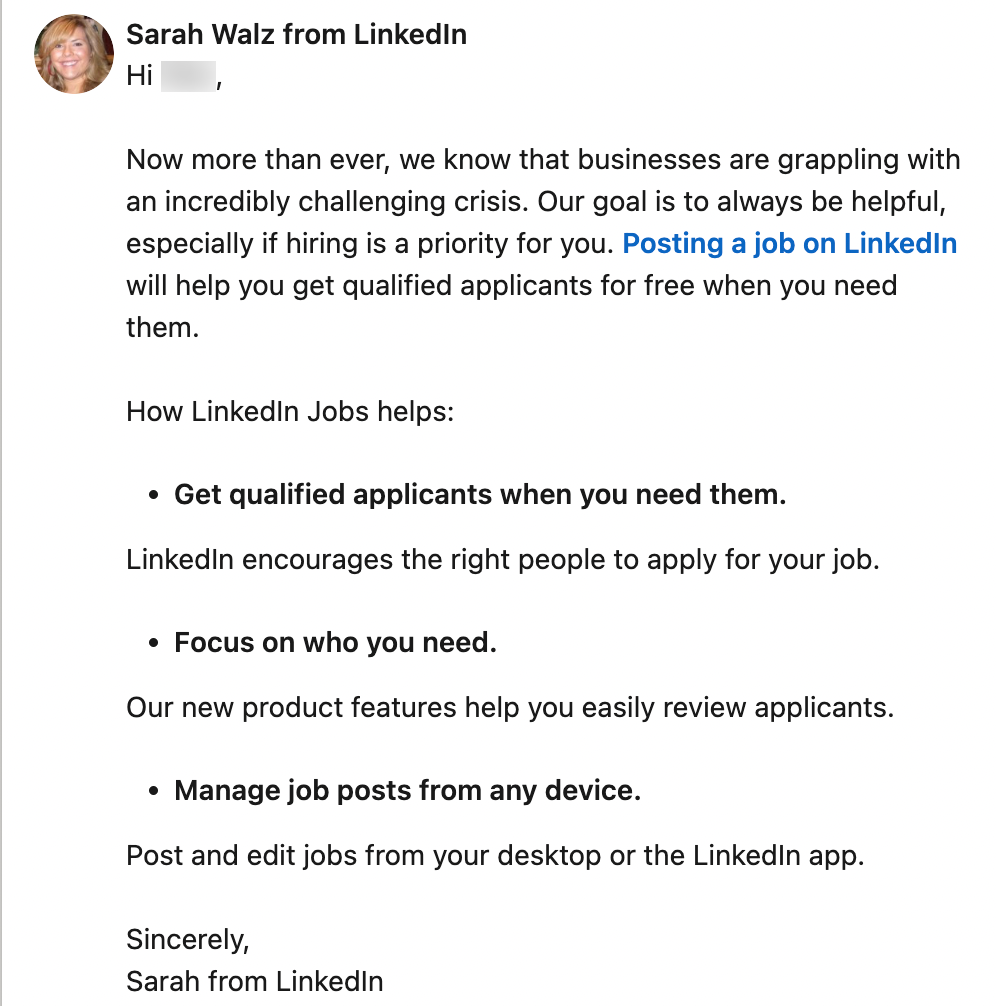
I really like the message Sarah sends out to relevant LinkedIn users, as it follows a wide range of content marketing best practices, including:
- Having a personalized approach
- Keeping everything short and sweet
- Using a “hook” at the beginning of the message to grab your attention
- Clearly listing the benefits you get from the feature
- Using formatting options such as bullet points and bold text to give her message structure.
She has also included a clear call to action asking you to follow the link and create a job post.
Type #3: Social media outreach
Now that we’ve covered the professional social media channel, we can get to other platforms.
The use cases here are vastly different from what we have listed so far for LinkedIn:
Product promotion – sending a direct message to your target audience, offering them special discounts for your products.
Event promotion – whether it is a physical (a product launch) or an online event (a webinar), you can send a direct message with an invitation to it.
Encouraging user-generated content (UGC) – one of the ways of engaging with your audience is by making sure they talk about you in their content.
You can send your users messages encouraging them to take part in a challenge or campaign that involves mentioning your product or brand in their own images or videos.
Customer support – Apart from your regular support channels, like email support or the live chat on your website, you can also consider using your social media channels to reach out to users with messages related to their experience with your products.
For instance, you can send installation instructions to the users who have messaged you over social media, asking to help them set up the tent your small business is producing.
The four types of social media outreach that I listed above are definitely important in terms of adding value to your marketing efforts. But there is one more that I think deserves special attention.
Social media outreach and influencer marketing
When somebody says they want to do social media marketing, the first thing that comes to my mind is finding and collaborating with relevant influential people.
By partnering up with influencers and bloggers, you can take advantage of the authority and trust they have among their audience to promote your products or increase your brand awareness.
There are many types of influencers out there, with the most famous of them hiring agents to manage their relationships with brands; there is no way to contact these influencers directly.
However, assuming that you want to collaborate with the micro or macro influencers, you can send them a personal direct message with a collaboration offer.
Here’s what such an offer could look like.
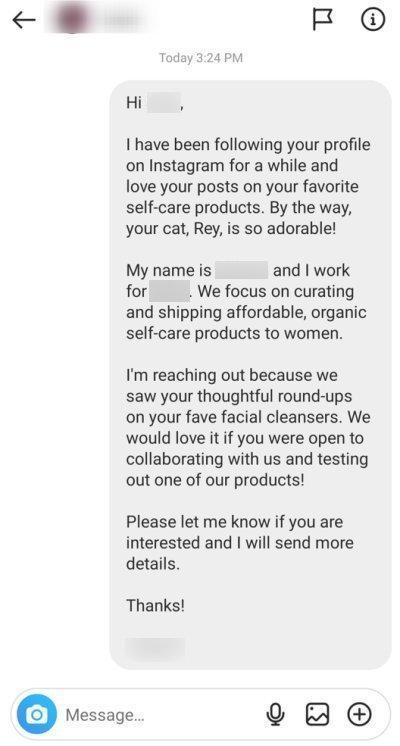
Unlike the messages we have composed for email and LinkedIn, the tone and the way you speak to your future influencer partner or potential customer is much more casual and personal.
Pro Tip: You can consider using ChatGPT for social media message generation to save time.
To sum up, consider using a different format or tone of conversation depending on the purpose of your outreach and the channel you are using.
While the three types of outreach that we discussed are different from each other in many aspects, they all share a common set of benefits. Let’s see what they are.
4 Main Benefits of Outreach Marketing
Honestly, outreach marketing has so many advantages that we could write an entire article about it. But there are other aspects of this discipline I want to talk about in this guide. So, let me be concise and list the most significant benefits only.
Benefit #1: Increased brand awareness
While certain types of outreach pursue the goal of earning you more revenue (e.g., sales cold emails, upsell follow-up emails, etc.), others will help you make your brand famous.
The most prominent form of outreach for improving your online presence is running campaigns to recruit influencers.
Each of these influencers can have audiences ranging from a couple of thousand followers to millions. So, all you need is an influencer, or several of them, to mention you in their content to easily expose your brand to millions of potential new clients.
Benefit #2: Higher conversion rates
We can divide marketing campaigns into two large types.
The first type follows the “throw the net wide” philosophy. Basically, you expose your content to a large general audience and hope there are people with relevant needs and interests that will see your content and buy your products. Typical examples here are from traditional marketing, such as banners and TV ads.
Obviously, the conversion rate when using this strategy is quite low.
The second type targets a much narrower audience you know would be interested in your product and trying to convert them into paying customers. This method is where you can expect a much higher conversion rate.
Outreach marketing belongs to this latter group and can get you significantly high conversion rates if you take your time and make a list of highly-relevant prospects to reach out to.
Benefit #3: Better organic performance
Now let’s talk about link-building outreach and its main benefit—helping you with your SEO efforts.
Backlinks are the links placed on other websites that point to your site. In the eyes of search engines, these are like votes of confidence for your website.
There are two sides to this process—quality in the form of reputable websites mentioning you and quantity in the form of the number of backlinks you have in total.
A good backlink profile assumes that you have both—it is among the most important factors for your SEO performance.
Therefore, dedicating your team’s time and resources to link building outreach will improve your website’s rankings for the keywords you care about and increase your organic traffic.
Benefit #4: Relationship building
So far, we have talked about the quantitative benefits of outreach marketing, such as more website visitors and more people exposed to your brand. However there are qualitative benefits as well.
Outreach marketing is about initiating personalized conversations with potential customers and partners and building relationships with them.
These relationships will help you build strong trust in your brand and your products, leading to happier customers and higher retention rates.
Overall, it is a great decision to invest in outreach marketing, considering its ability to expose your brand to the world and get you more paying customers.
Now that I have hopefully inspired you to get your outreach campaigns going, let me share a couple of handy tips on running such campaigns.
How To Successfully Implement an Outreach Marketing Strategy
Depending on the type of outreach marketing you have selected for your goals, you might end up with a different outreach message format, tone of the conversation, and timing for sending these messages.
The general outreach strategy for running these campaigns, however, is usually the same for all of them and consists of these steps.
Step #1: Get a clear set of goals that you want to achieve
If your goals are not clear, you risk spending time and resources on an effort that might not be a priority for your marketing team and your company in general.
My advice is to look at your company and department goals (e.g., OKRs) and derive your outreach marketing plan goals from them.
Step #2: Define your target audience
Reach out to people who are actually interested in your company and your products. Spend time on market research and user interviews to clearly define your buyer’s persona and understand the priorities, buying habits, and other aspects of your target audience.
Step #3: Identify the best marketing channels to use
Your choice of channels will depend on the product you sell and the audience you target.
For selling beauty products to teenagers, or video content promotion, you should consider TikTok. On the other hand, for offering a corporate antivirus solution to a startup CEO, you should consider using LinkedIn or email instead.
Step #4: Decide on the format and tone
We talked about this a bit in the beginning when listing the types of outreach marketing. Depending on the people you are contacting and the purpose of your outreach, you can be either formal or friendly. You can also decide to use rich formatting or keep it text only.
Step #5: Measure your results
It is really hard to tell if your outreach campaigns were successful or not if you have not set any key performance indicators (KPIs) to track their performance.
If you wonder which metrics you should use for your campaigns, I have a list of five KPIs up next that I suggest you consider.
5 Metrics to Measure the Success of an Outreach Marketing Campaign
The number of KPIs digital marketers use to measure the performance of various types of campaigns is probably endless. But out of this infinity of metrics, only a select few are relevant for a successful outreach marketing campaign.
Here are five of them that I like to use for my outreach campaigns.
Metric #1: Website traffic
This metric is especially relevant if you are doing SEO-related outreach, such as link exchange or guest posting. Your eventual goal is to see an increase in the organic traffic your website gets.
You can check your website traffic using a variety of SEO software and tools, including Google Analytics.

You can also check out the organic search and click data using your Google Search Console.
Metric #2: Conversion rate
For outreach marketing, the conversion rate is the percentage of interactions that result in success. You can calculate your conversion rate by using this simple formula.
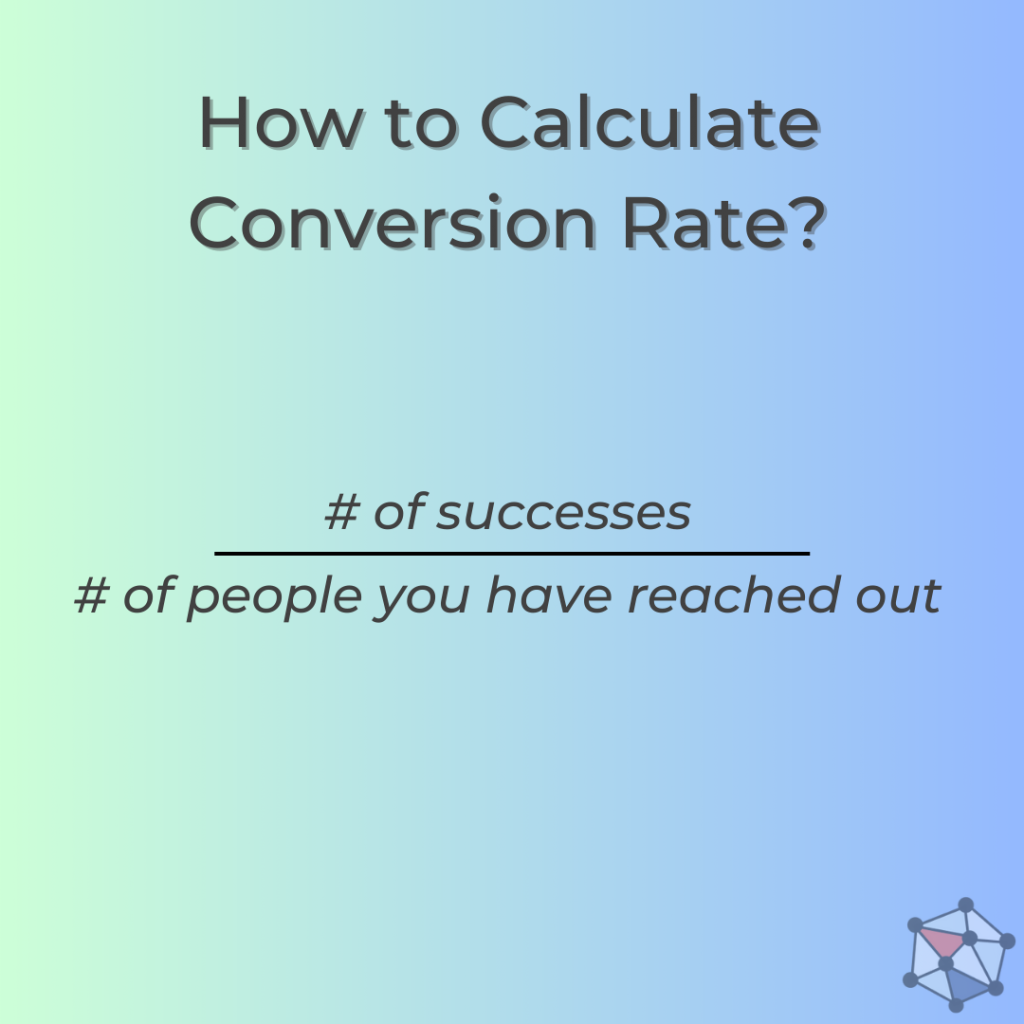
The successes, in this case, can be anything from the paid customers you get (for sales outreach) or partnerships you start (for influencer outreach).
Metric #3: Engagement rate
This metric is more popular for measuring the performance of social media outreach. The engagement rate tells you how active your audience is in terms of commenting, sharing, and reacting to your social media posts.
The formula for calculating the engagement rate is the following:
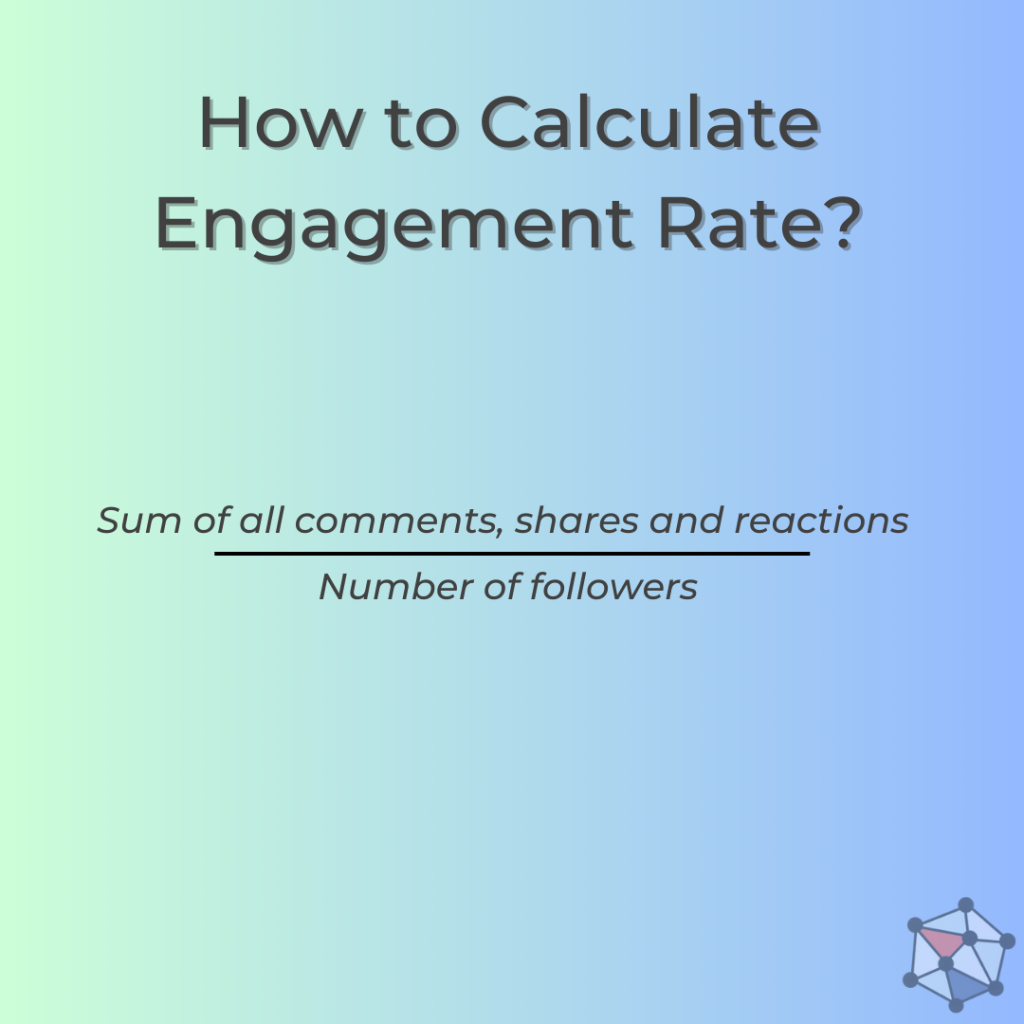
This metric is useful to measure when you are reaching out to your followers to encourage user-generated content creation, as you would expect your outreach to increase your engagement rate.
Metric #4: Cost per acquisition (CPA)
This metric shows how much you spend on marketing and advertising on average to bring a single paying customer to your company. You calculate it with this formula:
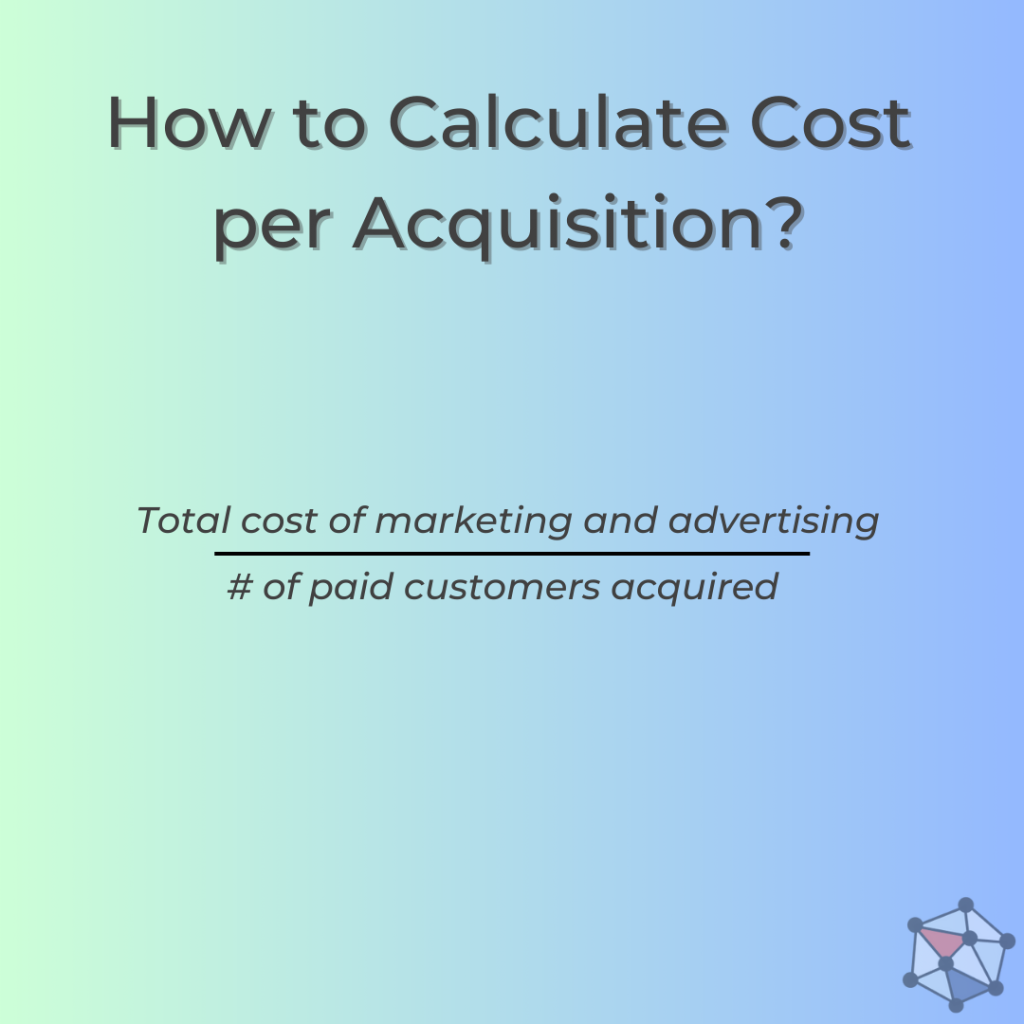
For outreach marketing, you should calculate the total cost you have spent on the outreach tools and specialist salaries and divide it by the number of customers you have acquired via this channel.
You can automatically calculate your CPA using many existing digital marketing tools.
Metric #5: Customer lifetime value (CLV)
This value is the total revenue you earn from the moment your customer joins you up to the moment they churn.
Combined with the previous metric, you can determine if your outreach marketing efforts are profitable.
If your lifetime value is less than the cost of acquiring the customer, you are losing money, as your customers are not earning you enough money to cover the costs of getting them on board.
Now Over to You
Outreach is an essential part of the life of every digital marketing specialist. The reasons for starting an outreach campaign can be quite diverse. Some might want to do cold sales calls and ensure business growth, while others might want to find great influencers to collaborate with.
No matter the reason you have decided to get into outreach marketing, believe me, it is worth your time and efforts.
Our guide about outreach marketing is just one of the dozens of educational articles we have on digital marketing. For the rest, you can check out our blog.

Sona Kalantaryan is a senior digital marketer with a creative past. Big fan of high cinema and well-optimized landing pages. She authors guides by sharing the best practices and does it the right way!
